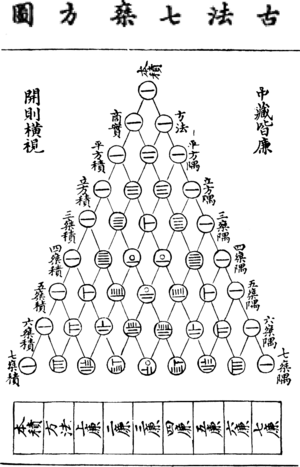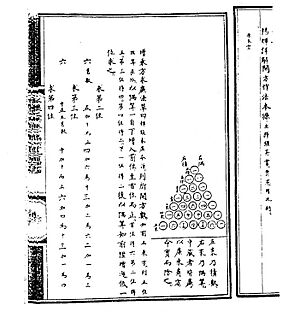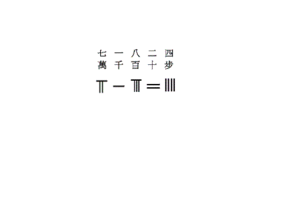Jia Xian facts for kids
Jia Xian (simplified Chinese: 贾宪; traditional Chinese: 賈憲; pinyin: Jiǎ Xiàn; Wade–Giles: Chia Hsien) was a brilliant Chinese mathematician. He lived in Kaifeng, China, during the Song dynasty. He was born around 1010 AD and passed away around 1070 AD.
Jia Xian is most famous for describing a special number pattern. Today, we call this pattern Pascal's triangle. He wrote about it in the 11th century. This was about 600 years before a French mathematician named Blaise Pascal also studied it!
Contents
Who Was Jia Xian?
According to historical records from the Song dynasty, Jia Xian worked in the palace. He was part of the Left Duty Group.
He learned a lot about numbers from his teacher, Chu Yan. Jia Xian was very good at mathematics. He even wrote several books about his discoveries.
Jia Xian's Amazing Triangle
Jia Xian's special number pattern is now known as the "Jia Xian triangle." It's the same pattern we call Pascal's triangle today.
He used this triangle for important calculations. It helped him find the square and cubic roots of numbers. These are ways to figure out what number, when multiplied by itself (or three times), gives you the original number.
Lost Books, Lasting Ideas
Sadly, Jia Xian's original book, called Shi Suo Suan Shu, is now lost. However, his amazing methods were not forgotten!
Another famous Chinese mathematician, Yang Hui, explained Jia Xian's work in great detail. Yang Hui clearly said that his own methods for finding square and cubic roots came from Jia Xian's book.
A very old and large Chinese encyclopedia, the Yongle Encyclopedia, helped keep this historical fact alive. It showed how important Jia Xian's ideas were.
How Jia Xian Solved Problems
Jia Xian used a clever way to solve math problems. It was called the "additive-multiplicative method." This method is similar to what we now call "Horner's rule" in mathematics.
It was a very advanced way to do calculations for his time. It showed how smart and innovative Chinese mathematicians were centuries ago.





